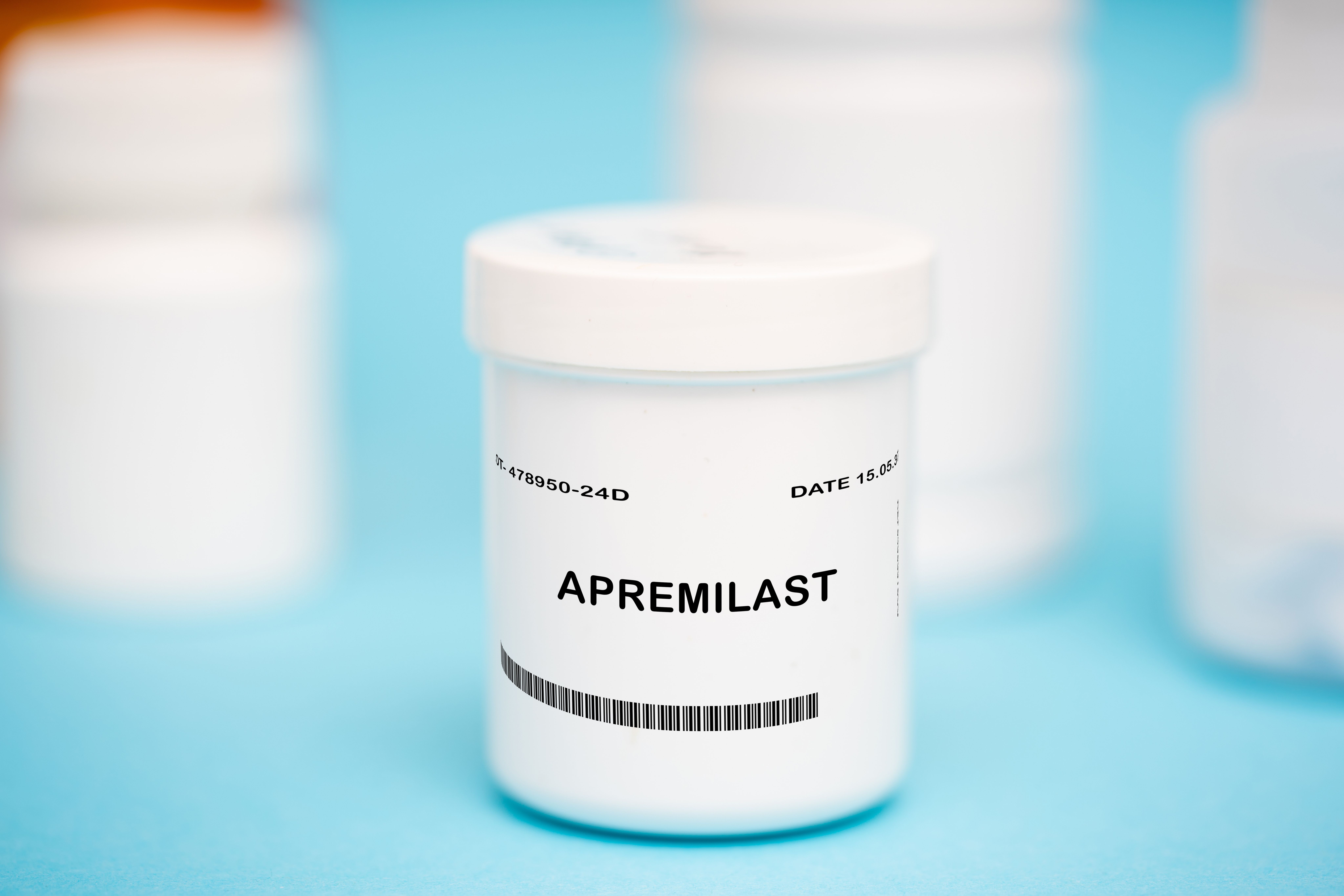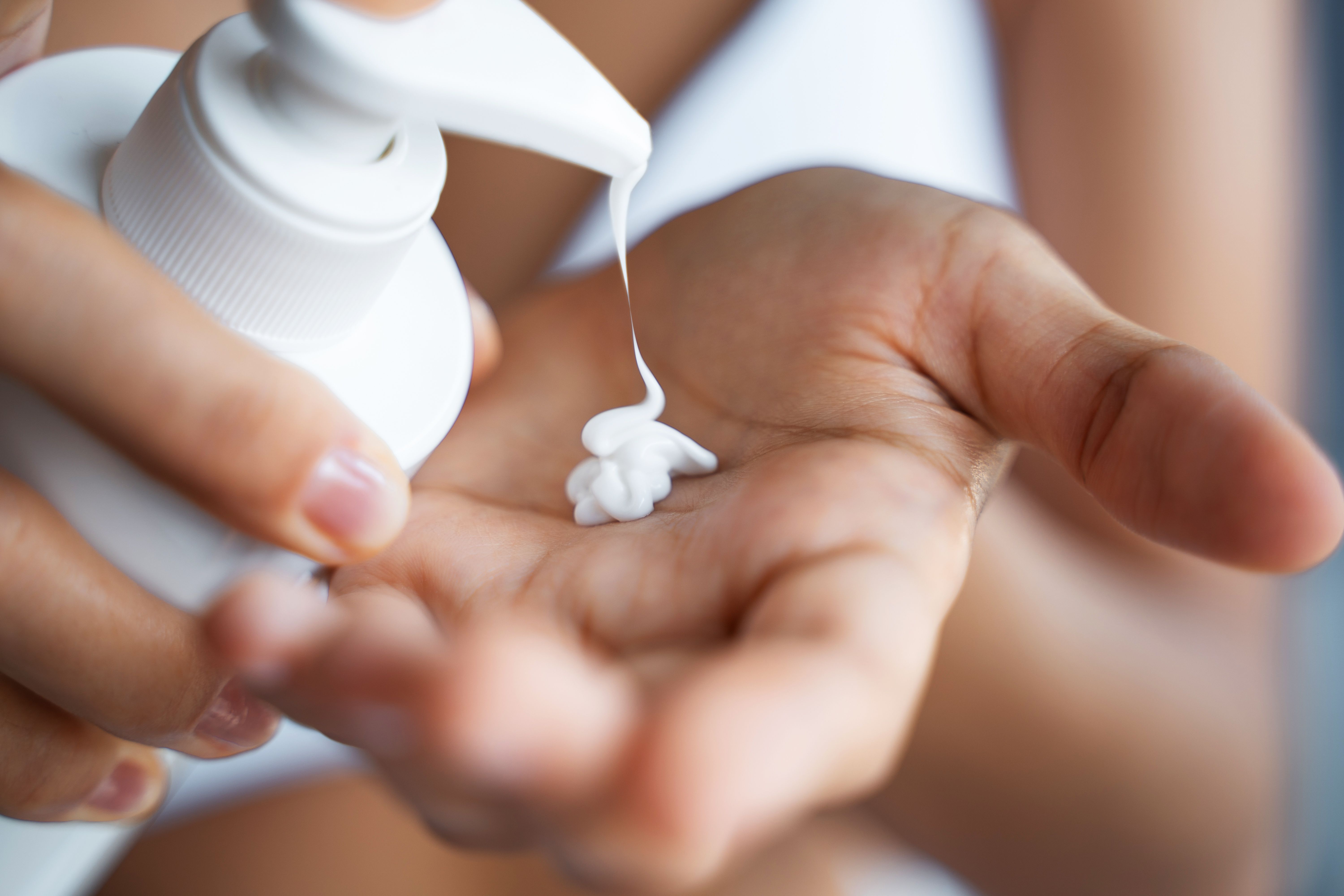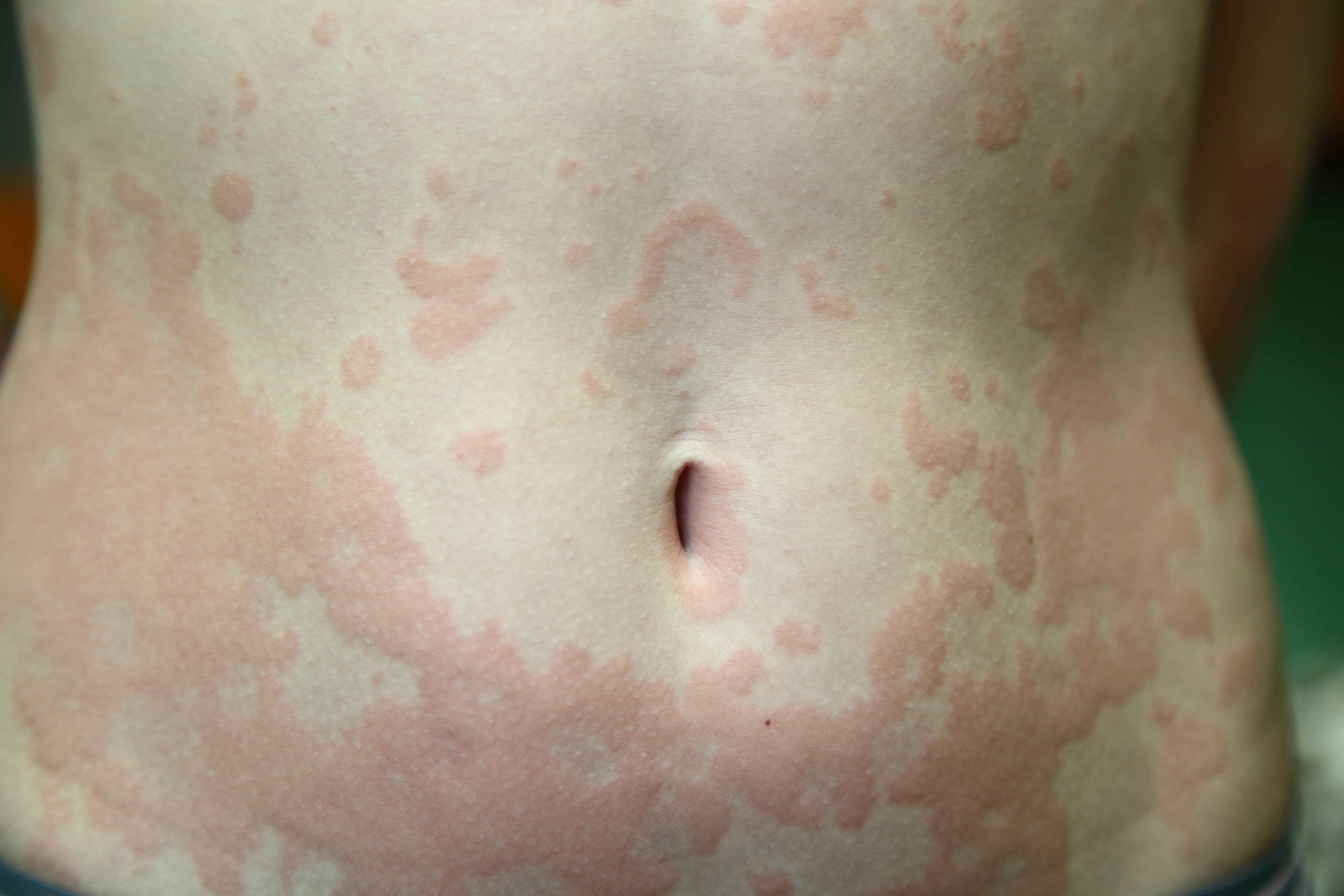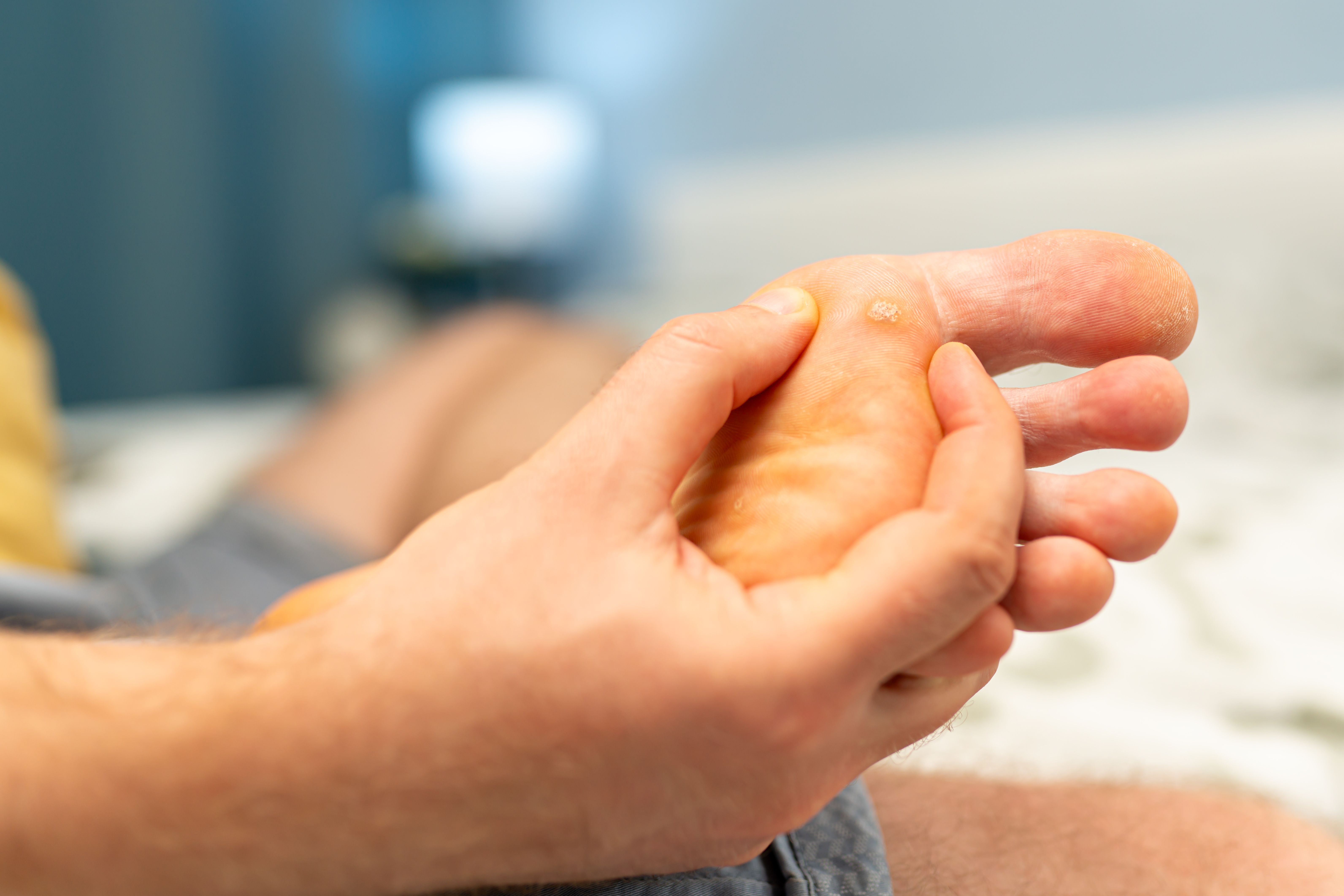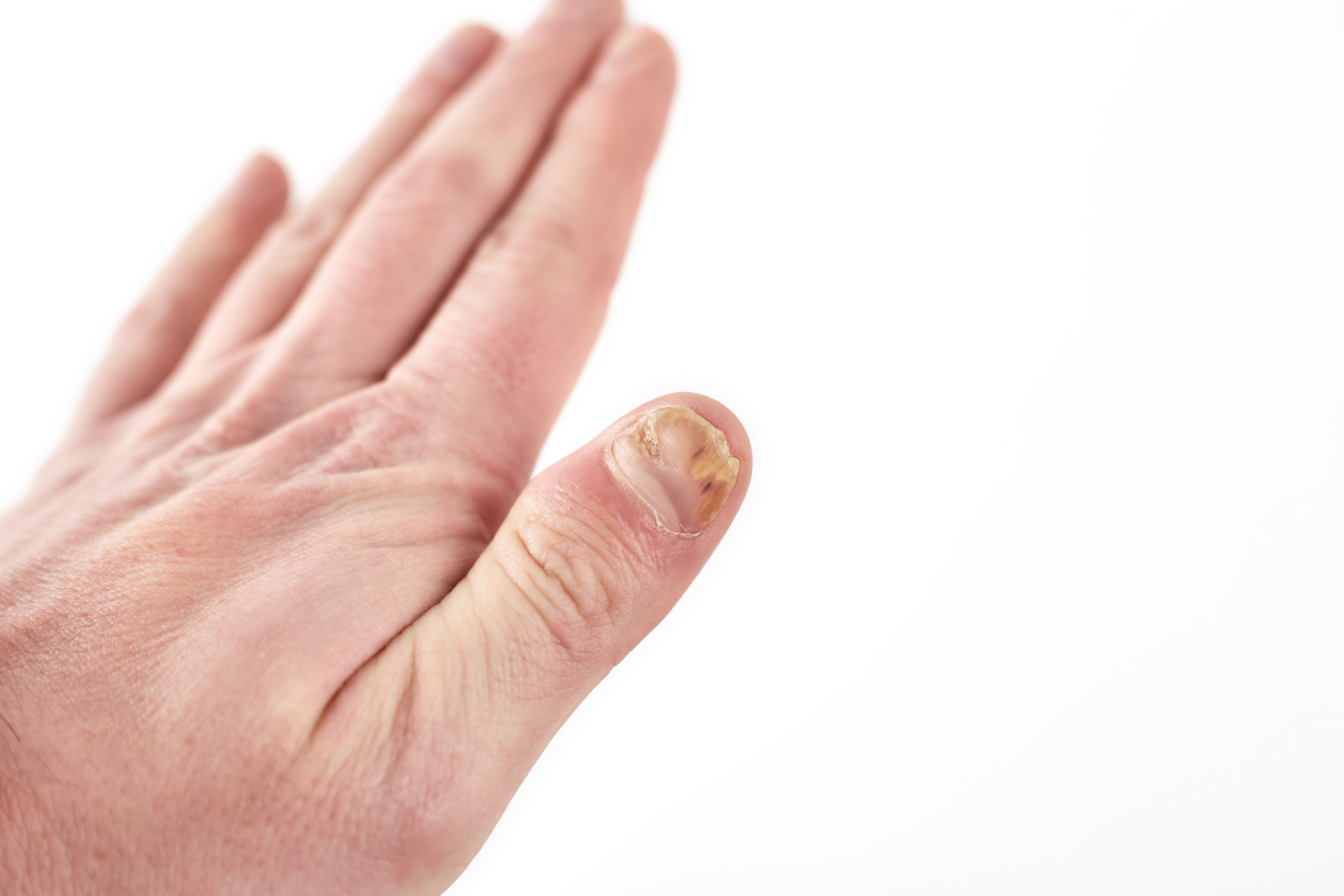- Acne
- Actinic Keratosis
- Aesthetics
- Alopecia
- Atopic Dermatitis
- Buy-and-Bill
- COVID-19
- Case-Based Roundtable
- Chronic Hand Eczema
- Chronic Spontaneous Urticaria
- Drug Watch
- Eczema
- General Dermatology
- Hidradenitis Suppurativa
- Melasma
- NP and PA
- Pediatric Dermatology
- Pigmentary Disorders
- Practice Management
- Precision Medicine and Biologics
- Prurigo Nodularis
- Psoriasis
- Psoriatic Arthritis
- Rare Disease
- Rosacea
- Skin Cancer
- Vitiligo
- Wound Care
Article
Drug approvals give boost to armamentarium for treating AKs, BCCs
The hot topics of discussion at Maui Derm 2012 were January’s Food and Drug Administration approval of two innovative products in the cutaneous oncology arena: Picato (ingenol mebutate, LEO Pharma) 0.015 percent gel and 0.05 percent gel for the treatment of actinic keratoses (AKs) and Erivedge (vismodegib, Genentech) for the treatment of advanced basal cell carcinoma. At MauiDerm I discussed the data on Picato and Keith Flaherty, M.D., an oncologist from Massachusetts General Hospital, discussed Erivedge.
Disclaimer: The content of this column is independent from that chosen by Dermatology Times’ editorial staff; it is created by the program director for MauiDerm and is intended to market MauiDerm 2013: Advances in Cosmetic and Medical Dermatology. Dermatology Times is the official media sponsor for this event.
The hot topics of discussion at Maui Derm 2012 were January’s Food and Drug Administration approval of two innovative products in the cutaneous oncology arena: Picato (ingenol mebutate, LEO Pharma) 0.015 percent gel and 0.05 percent gel for the treatment of actinic keratoses (AKs) and Erivedge (vismodegib, Genentech) for the treatment of advanced basal cell carcinoma. At MauiDerm I discussed the data on Picato and Keith Flaherty, M.D., an oncologist from Massachusetts General Hospital, discussed Erivedge.
Ingenol mebutate (Picato): 0.015 percent and 0.05 percent gel
Ingenol mebutate is derived from the sap of the plant Euphorbia peplus, a commonly found plant whose sap has been used in traditional medicine for the treatment of a wide variety of skin lesions ranging from warts to skin cancer. The active pharmacologic ingredient, ingenol mebutate (ingenol 3-angelate), has been formulated as a field therapy for the treatment of AKs.
Extensive work has been done to determine the mechanism of action of ingenol mebutate. In high concentrations it induces tumor cell necrosis. It also up-regulates keratinocyte and endothelial cell cytokine and chemokine production presumably via the protein kinase C (PKC) pathway. In response to ingenol mebutate, IL-8 a neutrophil chemo-attractant is produced in significant quantities by rapidly proliferating keratinocytes and endothelial cells following exposure to ingenol mebutate.
Also upregulated in response to ingenol mebutate is the expression of adhesion molecules ICAM-1 and E-selectin by endothelial cells, which in turn promotes neutrophil migration. In mouse models ingenol mebutate was show to reduce mutated p53 patches of skin in UV irradiated mice compared to placebo.
Ingenol mebutate was approved for the treatment of AKs using two different concentrations employing different dosing regimens. Ingenol mebutate 0.015 percent gel applied daily for three consecutive days was approved for treatment of AKs of the face and scalp. Ingenol mebutate 0.05 percent gel applied daily for two consecutive days was approved for treatment of AKs on the trunk and extremities.
In two multicenter, randomized, parallel-group, double-blind, vehicle controlled pivotal phase 3 trials, the efficacy and safety of ingenol mebutate 0.015 percent gel applied daily for three consecutive days to the face and scalp was evaluated as a field therapy (four to eight AKs in a 25 cm2 area). Of the treated patients completing both studies, 37 and 47 percent of drug treated patients achieved 100 percent clearance compared to 2 and 5 percent for vehicle controls.
Partial clearance (≥ 75 percent lesions cleared) was achieved in 60 and 68 percent of drug treated patients compared to 7 and 8 percent for vehicle controls. Median percent lesion reduction for drug treated side were (83.3 percent) and (86.6 percent) compared to (0 percent) and (0 percent) for vehicle controls.
Clearance rates comparable
These clearance rates are comparable or better than currently FDA-approved AK field therapies used on the face and scalp. Hypopigmentation and hyperpigmentation were ≤ 1 percent. No scarring was reported. There was no systemic absorption of ingenol mebutate above the limit of quantification in blood samples of subjects evaluated.
The efficacy and safety of ingenol mebutate 0.05 percent gel applied daily for two consecutive days (four to eight AKs in a 25 cm2 area) to trunk and extremity lesions (arm, back of hand, chest, back, shoulder and leg) was evaluated in two multicenter, randomized, parallel-group, double-blind, vehicle controlled pivotal phase 3 trials.
Of the treated patients completing both studies, 28 and 42 percent of drug treated patients achieved 100 percent clearance compared to 5 and 5 percent for vehicle controls. Partial clearance (≥ 75 percent lesions cleared) was achieved in 44 and 55 percent of drug treated patients compared to 7 and 7 percent for vehicle controls. Median lesion percent reduction for drug treated side were (69 percent) and (75 percent) compared to (0 percent) and (0 percent) for vehicle controls. Hypopigmentation and hyperpigmentation were ≤1 percent. There was no systemic absorption of ingenol mebutate above the limit of quantification in the blood samples of subjects evaluated.
A 12-month follow-up study was performed evaluating patients who completely cleared their lesions during the phase 3 studies. No recurrent lesions were observed in 46.1 percent of patients treated on the face or scalp and in 44 percent of patients treated for trunk and extremity lesions. The overall reduction in AKs from baseline to 12 months was 87.2 percent for face and scalp lesions and 86.8 percent for trunk and extremity lesions.
The take home points on both 0.015 percent and 0.05 percent gel is that they have comparable or better efficacy in clearing AKs in comparison to currently FDA-approved field therapies, produce sustained clearance in 12 month follow-up studies, cause limited downtime (peak inflammation day four to eight with resolution by day 15), achieve excellent patient compliance with the three- and two-day application regimens and induce minimal side effects post-therapy in terms of hypopigmentation, hyperpigmentation and scarring.
Vismodegib (Erivedge, Genentech) for the treatment of advanced basal cell carcinoma (BCC)
Historically the treatment of patients with advanced BCC with either metastatic or locally advanced disease employed standard chemotherapeutic regimens using agents such as cis-platinum. Reports of success were few and generally limited to individual case reports until the recent FDA approval of Erivedge, a hedgehog pathway inhibitor.
The “hedgehog pathway” (Hh pathway: figures 1 and 2) and its role in the development of basal cell carcinomas (BCC) has been the subject of intense research over the last decade.
Aberrant activation of the Hh pathway (figures 3 and 4) has been identified in both hereditary BCC syndrome, i.e. Gorlin syndrome (basal cell nevus syndrome) as well as sporadic BCCs. Gorlin syndrome patients carry a germ-line heterozygous mutation in the PTCH gene and are highly predisposed to developing multiple BCCs. Mutations in the PTCH gene (figure 3), remove its ability to inhibit the Hh pathway through its inhibition of SMO (smoothened protein).
Approximately 90 percent of sporadic BCCs have a PTCH gene mutation and an additional 10 percent of sporadic BCC have activating mutations in the SMO gene (figure 4), which is downstream of PTCH, and this mutation leads to overstimulation of the Hh pathway.
Vismodegib (Erivedge, Genentech) is a hedgehog pathway inhibitor (figure 5), which binds to and inactivates SMO. Its use is indicated for the treatment of adults with metastatic basal cell carcinoma (mBCC), or with locally advanced basal cell carcinoma (laBCC) that has recurred following surgery or who are not candidates for surgery or radiation.
Erivedge evaluation
Keith Flaherty, M.D., presented data evaluating the safety and efficacy of Erivedge in mBCC and laBCC obtained from an international, single-arm, multi-center, open-label, two-cohort phase 2 study involving 104 patients (Erivance BCC/SHH447g). Patients with laBCC either had histologically-confirmed BCC that was unresectable or were not appropriate candidates for surgery: > 1 cm or > two recurrences after surgery; curative resection unlikely; anticipated substantial morbidity and/or deformity after surgery. mBCC patients had histologic confirmation of mBCC and radiographically measurable tumors. The patient demographics are listed in figure 6. Patients received vismodegib 150 mg/day orally until tumor progression or intolerable drug toxicity.
The objective response rates (ORR) were assessed by an independent review facility (IRF) and were 42.9 percent for laBCC and 30.3 percent for mBCC. The median duration of response was 7.6 months and the median progression-free survival was 9.5 months for both cohorts.
Once the drug was stopped, the benefits waned as BCCs recurred including some that were clinically cured. Adverse events also waned after discontinuation of the drug as patients regrew hair, had their muscle cramps disappear and had their normal taste return.
In summary, vismodegib is dramatically effective for BCC treatment in patients with advanced BCCs, including patients with Gorlin syndrome (basal cell nevus syndrome). Approximately 80 percent of patients with advanced BCC have regression of disease with 30 to 60 percent of patients having objective responses.
No tumor resistance has been seen. Most side effects were mild to moderate and reversible after stopping drug. Due to the side effect profile, most patients are unlikely to tolerate therapy for 18 months. Now FDA-approved for patients with advanced BCC, it will be interesting to see how vismodegib will be used both therapeutically and in an adjuvant setting in combination with other surgical and nonsurgical modalities.
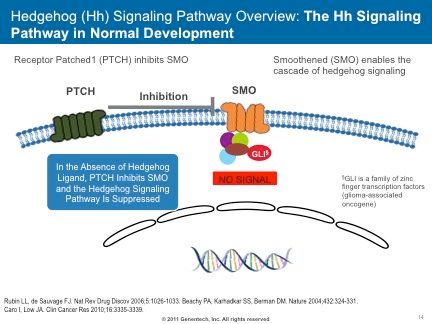
Figure 1: Hh Pathway Signaling in Normal Development
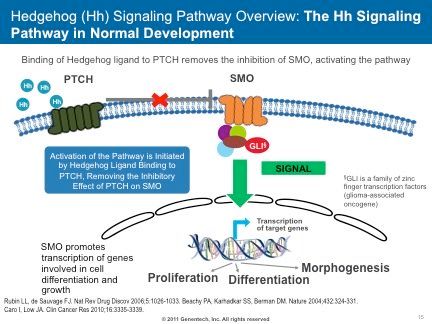
Figure 2: Hh Pathway Signaling in Normal Development
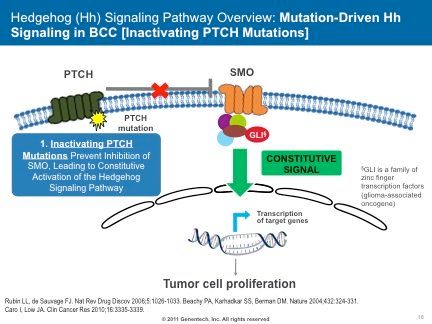
Figure 3: Mutation-Driven Hh Signaling in BCC involving inactivation of PTCH
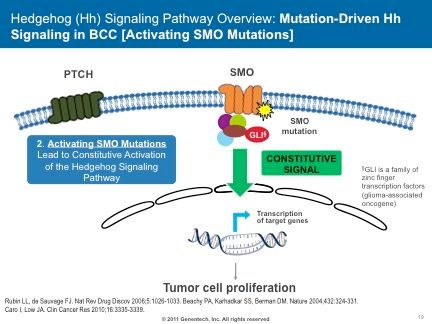
Figure 4: Mutation-Driven Hh Pathway Signaling due to Activated SMO Mutations
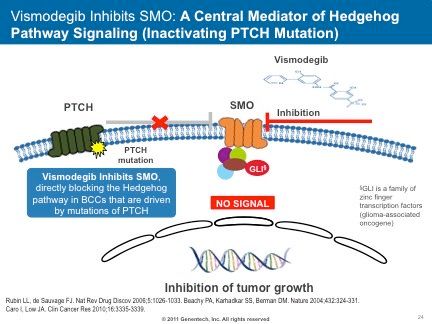
Figure 5: Vismodegib's ability to inhibit both PTCH and SMO mutation activation of the Hh Pathway via inhibition of SMO.
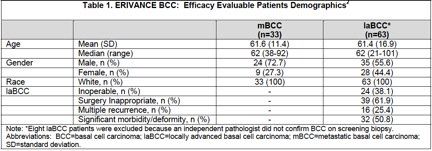
Figure 6: Patient demographics for phase 2 Erivance BBC study

Figure 7: Efficacy data from phase 2 Erivance BCC study
Newsletter
Like what you’re reading? Subscribe to Dermatology Times for weekly updates on therapies, innovations, and real-world practice tips.



